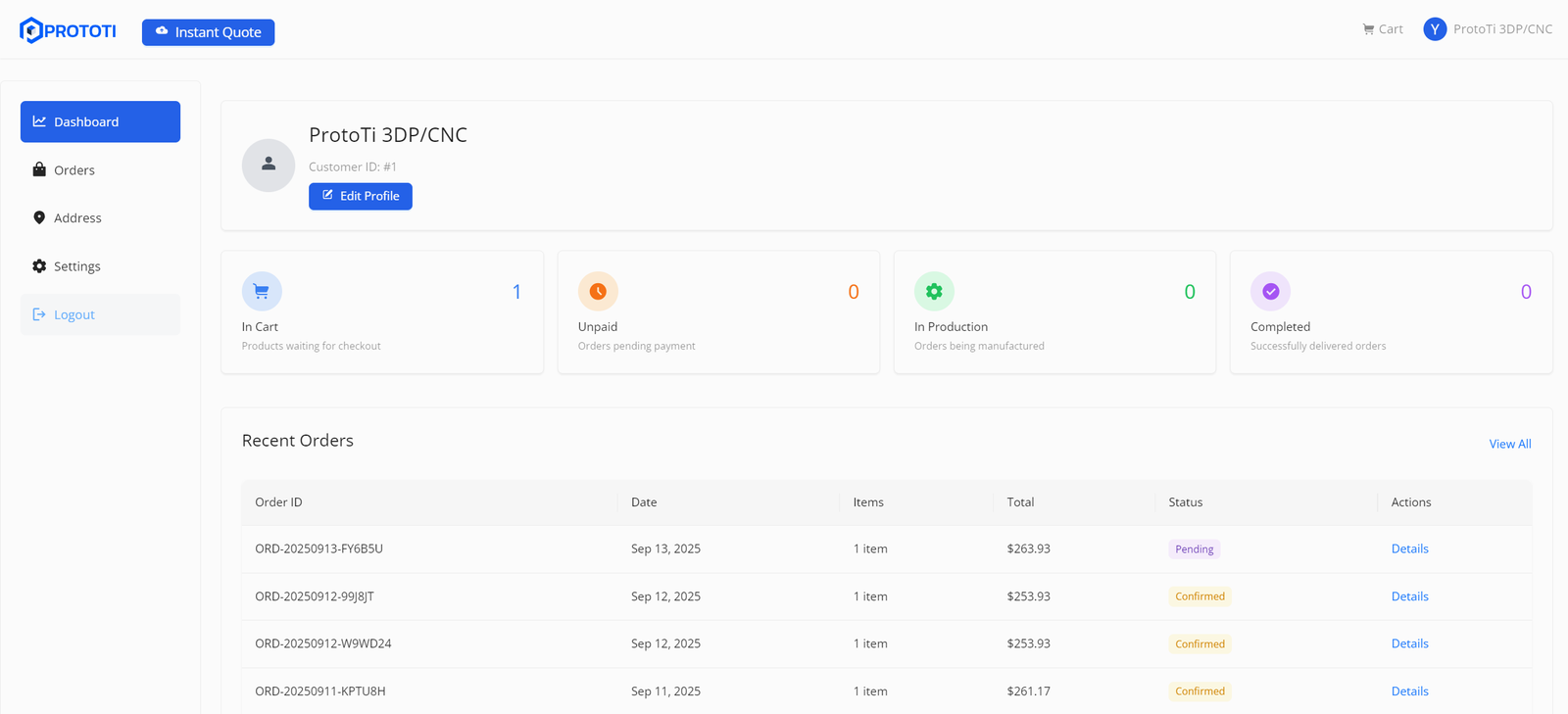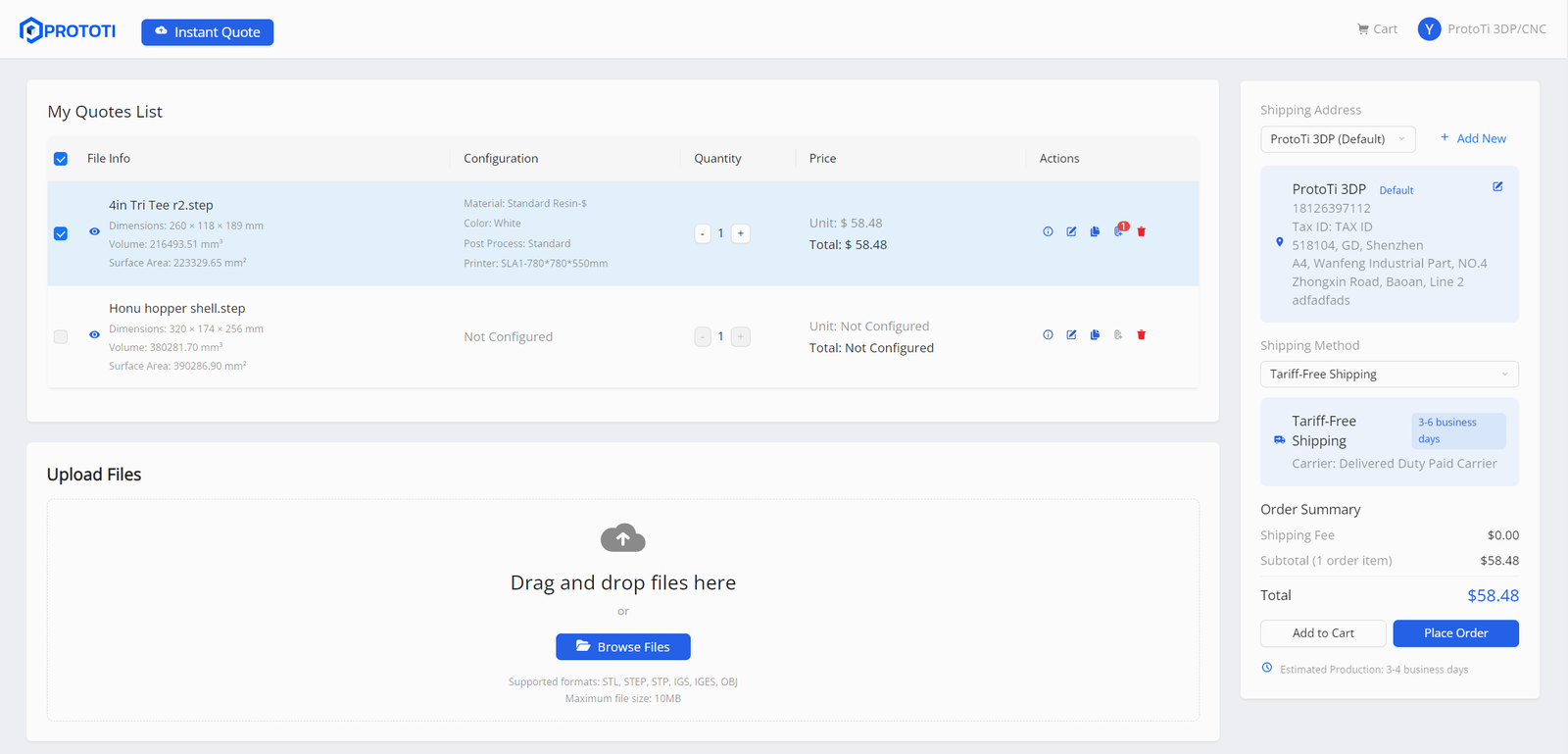SLM 3D Printing Service
Experience the next level of 3D printing with our state-of-the-art SLM technology. Whether you’re prototyping a new design or crafting intricate, high-detail components, our SLM 3D printing service ensures your vision is brought to life with precision, clarity, and an exceptional surface finish. From concept to creation, we deliver perfection in every layer.
- Excellent mechanical properties and a wide range of material options.
- No tooling required, reducing manufacturing costs for complex parts.
- Flexible small-batch production, meeting personalized/customized needs.
What is SLM 3D Printing?
SLM (Selective Laser Melting) is an advanced metal 3D printing technology and a type of Powder Bed Fusion (PBF) process. It works by using a high-power laser beam to selectively scan and fully melt metal powder particles layer by layer on a powder bed. The molten material then solidifies upon cooling, ultimately forming high-density metal parts.
Compared to traditional manufacturing methods, SLM does not require molds and can directly produce complex, high-performance metal components. It is particularly well-suited for industries with high demands for structural complexity and mechanical performance, such as aerospace, medical devices, automotive, energy, and tooling.
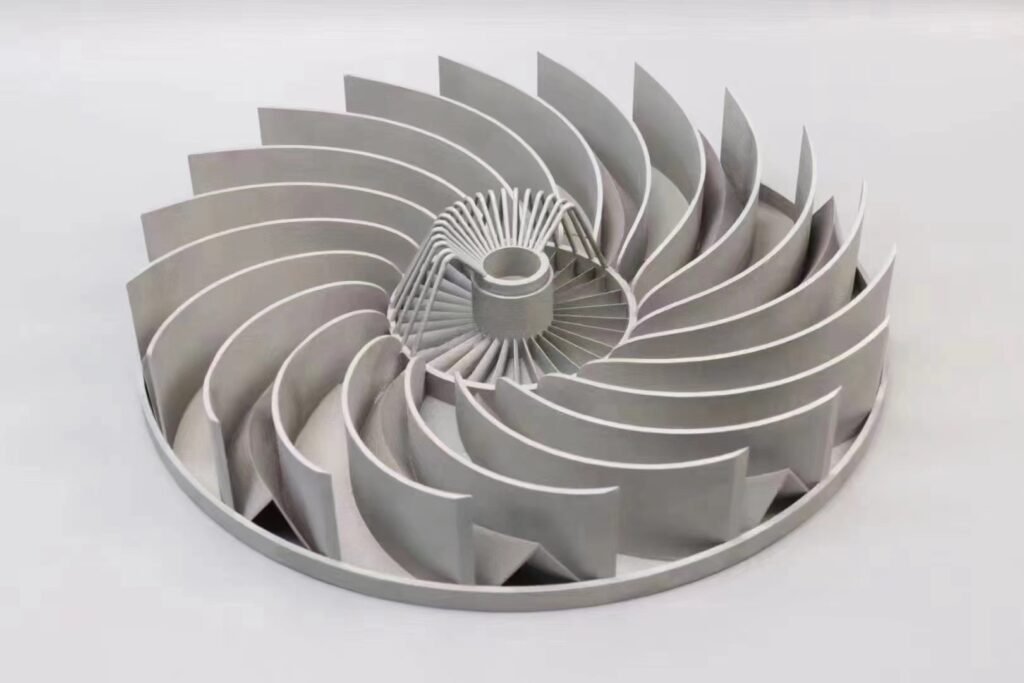
ProtoTi SLM 3D Printing Capabilities
Name
Min. Wall Thickness
Max. Build Size
Tolerance
Support Structures
Lead time
Industrial SLM
1 mm
280 x 280 x 350mm
±0.3 mm
Yes
from 5 business days
Industrial SLM
1 mm
420 x 420 x 450mm
±0.3 mm
Yes
from 5 business days
SLM 3D Printing Parts Using Various Materials
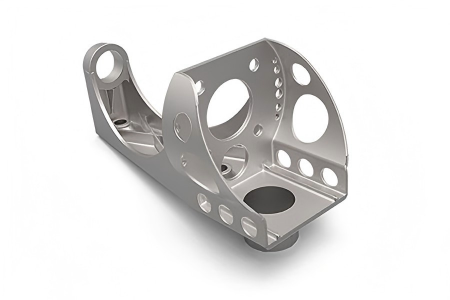
Aluminum AlSi10Mg
AlSi10Mg is an aluminum alloy commonly used in metal 3D printing technologies such as SLM (Selective Laser Melting) . It offers excellent strength, hardness, corrosion resistance, and thermal conductivity. Composed primarily of aluminum (Al), silicon (Si), and a small amount of magnesium (Mg), AlSi10Mg is lightweight and provides outstanding mechanical properties, making it particularly well-suited for producing functional parts with lightweight and complex geometries.
✅ Material Highlights:
Excellent strength-to-weight ratio
Good thermal and electrical conductivity
Good weldability and machinability
Outstanding corrosion resistance
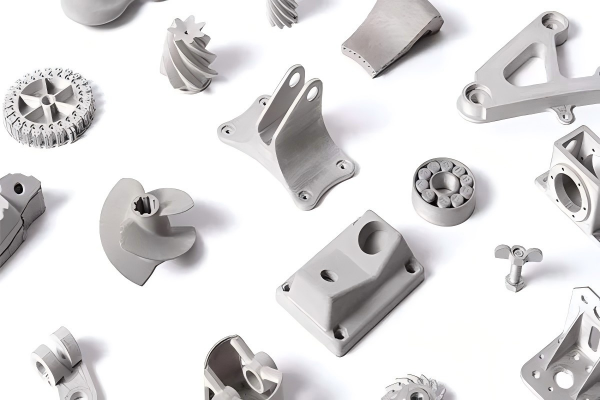
Aluminum 6061
Aluminum 6061 is a high-strength aluminum alloy widely used in industrial applications and has recently been adapted for metal 3D printing—primarily through laser powder bed fusion (LPBF) processes such as SLM. It is composed mainly of aluminum, magnesium, and silicon, offering a balanced combination of mechanical strength, corrosion resistance, and heat-treatability.
Compared to conventional aluminum alloy powders like AlSi10Mg, 6061 more closely matches the properties of traditionally forged aluminum alloys, making it suitable for applications that demand higher strength, heat resistance, and machinability.
✅ Material Highlights:
High strength and good heat resistance
Excellent machinability and weldability
Good corrosion resistance (especially after anodizing)
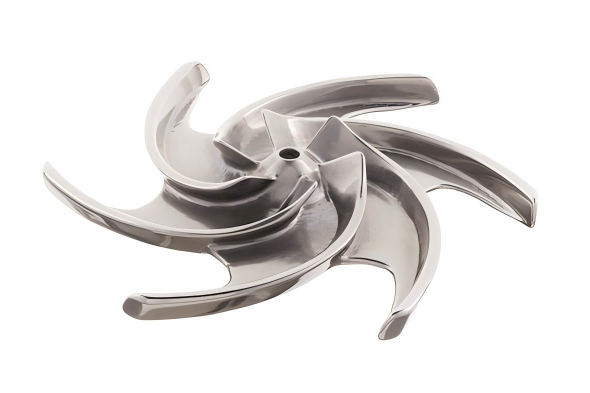
Stainless steel 316L
316L stainless steel is a low-carbon austenitic stainless steel commonly used in metal 3D printing processes such as SLM or DMLS. It offers excellent corrosion resistance, toughness, and mechanical strength, making it especially suitable for harsh environments or applications with high corrosion resistance requirements.
Due to its good printability and post-processing characteristics, 316L is widely used in medical, chemical, aerospace, automotive, and food industry sectors.
✅ Material Highlights:
Excellent corrosion resistance (suitable for humid and chemically corrosive environments)
Good strength and ductility
Easy to polish, machine, and weld
Biocompatible, making it ideal for medical devices and implants
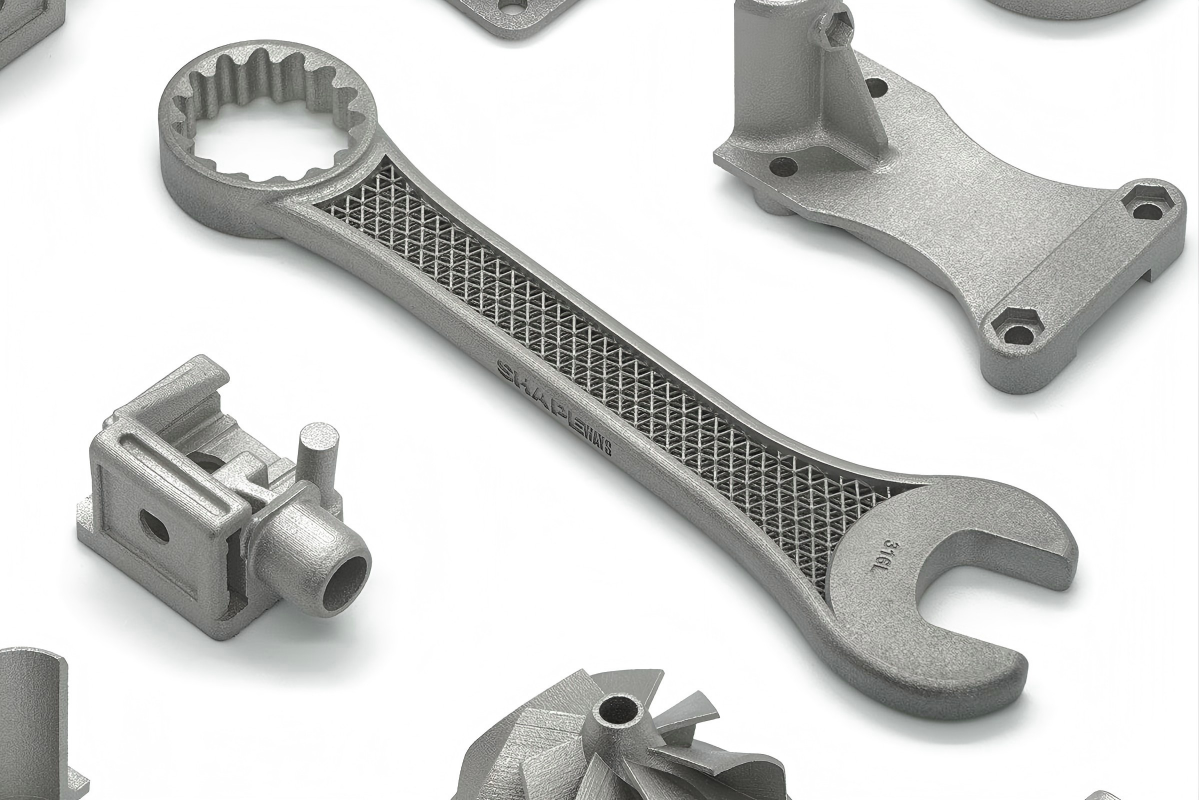
Stainless-Steel-17-4PH
17-4PH stainless steel is a precipitation-hardening martensitic stainless steel that combines high strength, good corrosion resistance, and excellent mechanical properties. It is a commonly used structural material in metal 3D printing processes such as SLM or DMLS. After printing, its hardness and strength can be further enhanced through heat treatments like H900.
Compared to 316L, 17-4PH is better suited for industrial parts that require higher mechanical performance. It is widely used in aerospace, defense, tooling, energy, and petrochemical industries.
✅ Material Highlights:
High strength and hardness (can be enhanced through heat treatment)
Good corrosion resistance
Stable dimensional accuracy
Weldable and machinable
Suitable for both structural and functional parts
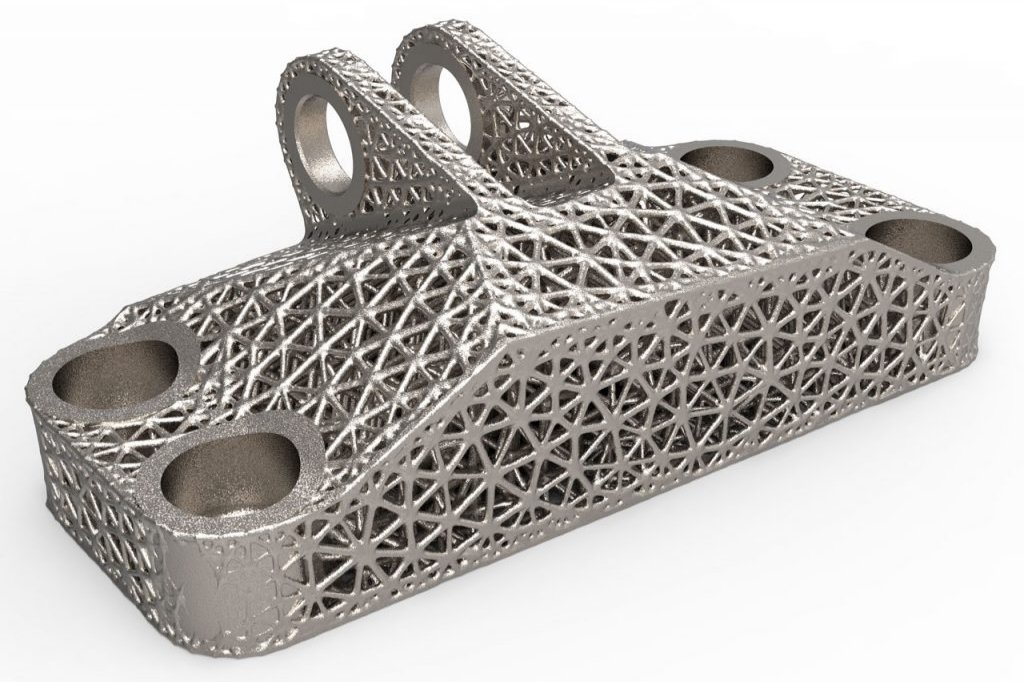
Titanium TiAl6V4
Ti6Al4V (Titanium Alloy Ti-6Al-4V) is the most commonly used titanium alloy in 3D printing. Composed of 90% titanium, 6% aluminum, and 4% vanadium, it offers exceptionally high strength, excellent corrosion resistance, and outstanding biocompatibility. Combining lightweight characteristics with strong mechanical performance, this material is widely used in aerospace, medical implants, automotive, and high-performance industrial components.
Through metal additive manufacturing processes such as SLM (Selective Laser Melting) and EBM (Electron Beam Melting), Ti6Al4V enables the production of complex and highly precise parts in a single build.
✅ Material Highlights:
High strength and lightweight (low density with high strength)
Excellent corrosion resistance
Superior biocompatibility (suitable for implant-grade applications)
Ideal for 3D printing of complex and precision structures
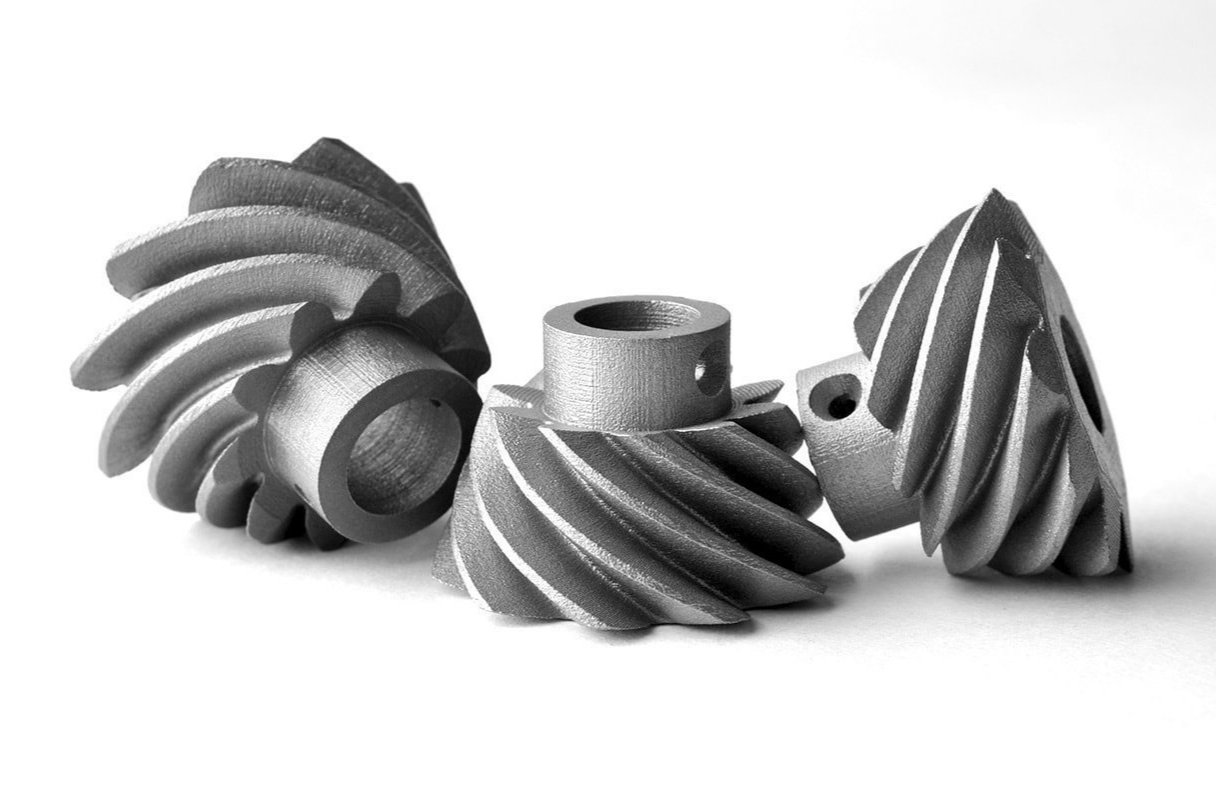
Tool Steel 1.2709
Tool Steel 1.2709 (also known as Maraging Steel) is a high-strength, high-hardness metal material commonly used in SLM (Selective Laser Melting) 3D printing processes. It offers excellent heat treatability and good machinability. After heat treatment, it can achieve extremely high strength (over 2000 MPa) while maintaining good ductility and dimensional stability.
✅ Material Highlights:
Extremely high strength and hardness (after heat treatment)
Excellent dimensional stability
Easy to machine, heat treat, and polish
Suitable for molds and structural parts requiring high wear resistance and repeatability
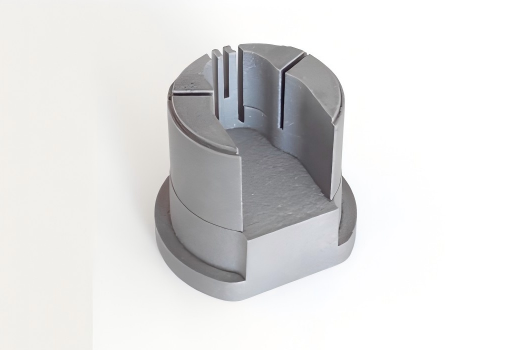
Tool Steel CX
Tool Steel CX is a corrosion-resistant tool steel optimized for metal 3D printing processes such as SLM or DMLS. It combines high strength with excellent corrosion resistance. This material delivers strong mechanical properties and high hardness without the need for post-heat treatment, making it ideal for molds and functional parts that require high dimensional accuracy and surface quality.
Its performance characteristics make it an excellent alternative to traditional H13 and 420 stainless steel.
✅ Material Highlights:
Good mechanical strength and hardness (no heat treatment required)
Excellent corrosion resistance
Stable dimensions and high polishability
Easy to post-process (e.g., CNC machining, polishing, etching)
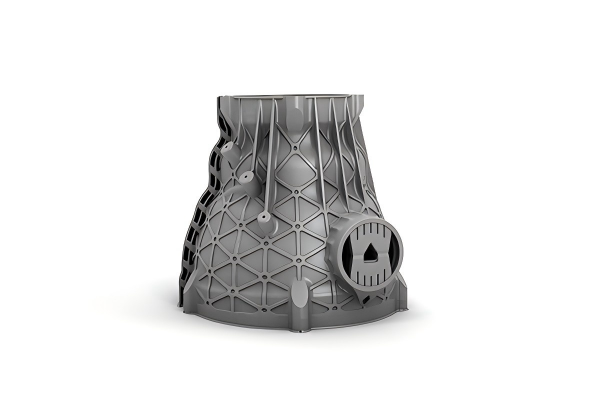
Inconel 718
Inconel 718 is a nickel-chromium-based superalloy commonly used in additive manufacturing processes such as laser powder bed fusion (LPBF). Known for its excellent strength, corrosion resistance, and high-temperature performance, Inconel 718 is ideal for aerospace, automotive, and power generation applications. After appropriate heat treatment, it offers high tensile strength, good ductility, and excellent oxidation resistance.
✅ Material Highlights:
High strength and toughness at elevated temperatures
Excellent corrosion and oxidation resistance
Good weldability and machinability
Suitable for complex, high-performance components such as turbine blades, engine parts, and structural components
SLM 3D Printing Material Specifications
Material Name
Description
Max. Build Size
Elongation at Break (%)
Flexural Strength (MPa)
HDT@0.46 MPa (°C)
Aluminum AlSi10Mg
Gray、Sandblasted、Glassblasted
420 x 420 x 450 mm
2-5%
230-280 MPa
95℃
Aluminum 6061
Gray、Sandblasted、Glassblasted
280 x 280 x 350 mm
10-14.4%
240-280 MPa
150-170℃
Stainless steel 316L
Gray、Sandblasted、Glassblasted
420 x 420 x 450 mm
40-50%
500-600 MPa
Not applicable
Stainless-Steel-17-4PH
Gray、Sandblasted、Glassblasted
280 x 280 x 350 mm
10-15%
1100-1400 MPa
Not applicable
Titanium TiAl6V4
Gray、Sandblasted、Glassblasted
150 x 150 x 200 mm
10-15%
880-1100MPa
Not applicable
Tool Steel 1.2709
Gray、Sandblasted、Glassblasted
280 x 280 x 350 mm
10-12%
2000-2200 MPa
Not applicable
Tool Steel CX
Gray、Sandblasted、Glassblasted
280 x 280 x 350 mm
8-12%
1500-2000 MPa
Not applicable
Inconel 718
Gray、Sandblasted、Glassblasted
280 x 280 x 350 mm
5%
136 MPa
Not applicable
SLM 3D Printing PROS & CONS
Pros
High Precision and Detail:
Capable of producing complex geometries with fine details and tight tolerances.
Excellent Mechanical Properties:
Produces fully dense metal parts with mechanical properties comparable to wrought materials.
Wide Material Range:
Supports many metals and alloys like stainless steel, titanium, aluminum, Inconel, tool steels, etc.
No Tooling Required:
Ideal for rapid prototyping and small batch production without expensive molds or tooling.
Design Freedom:
Enables complex internal structures, lattices, and topology-optimized parts not feasible with traditional methods.
Material Efficiency:
Uses only the necessary amount of powder, reducing waste compared to subtractive methods.
Cons
High Equipment and Operating Costs:
Machines and metal powders are expensive, limiting accessibility.
Slow Build Speed for Large Parts:
Printing large volumes can be time-consuming compared to other manufacturing methods.
Post-Processing Required:
Parts often require support removal, heat treatment, surface finishing, and sometimes machining.
Powder Handling Challenges:
Requires strict safety and environmental controls due to fine metal powders.
Size Limitations:
Build volume is limited by machine dimensions, restricting part size.
Material Limitations and Anisotropy:
Some materials may have directional properties; mechanical properties can vary based on build orientation.
SLM 3D Printing FAQs
1. What is SLM 3D printing?
SLM (Selective Laser Melting) is a metal additive manufacturing technology that uses a high-powered laser to selectively melt metal powder layer by layer, producing complex and high-precision metal parts.
2. What materials can be printed using SLM ?
SLM supports a wide range of metal materials, including but not limited to:
Stainless steels (e.g., 316L, 17-4PH)
Titanium alloys (e.g., Ti6Al4V)
Aluminum alloys (e.g., AlSi10Mg)
Nickel-based superalloys (e.g., Inconel 718)
Tool steels (e.g., 1.2709, CX)
3. What is the accuracy of SLM-printed parts?
SLM offers high accuracy with typical layer thicknesses between 20 to 50 microns, enabling detailed and tight tolerance parts. Final precision depends on machine calibration, powder quality, and post-processing.
4. What post-processing is required for SLM parts?
Common post-processing steps include:
Support removal
Heat treatments (aging, annealing) to enhance mechanical properties
Surface finishing (polishing, sandblasting) to improve surface quality
Machining for tight assembly tolerances
5. How are the mechanical properties of SLM parts?
SLM parts generally have mechanical properties comparable to wrought or cast metals, especially after heat treatment. Process parameters and build orientation can influence anisotropy in mechanical behavior.
6. What are the main advantages of SLM?
Ability to produce complex geometries and lightweight structures
No need for tooling, ideal for small batches and rapid prototyping
High material utilization and minimal waste
7. What are the limitations of SLM?
High equipment and powder costs
Relatively slow build speed, especially for large parts
Requires specialized facilities and powder handling safety
Build volume limited by machine size
8. How is quality ensured in SLM printing?
Using high-quality metal powders
Strict control of printing parameters
Appropriate heat treatment and quality inspections (e.g., CT scanning, mechanical testing)
Design considerations like support structures and assembly gaps
9. How does SLM compare to other metal 3D printing technologies?
Compared to DMLS and EBM, SLM uses laser melting with generally higher precision and a wider material range. Compared to binder jetting or metal extrusion, SLM parts have superior mechanical properties but higher costs.
10. What applications is SLM suited for?
Aerospace (complex structural and engine components)
Medical (custom implants, surgical instruments)
Automotive (high-performance parts)
Tooling and mold manufacturing
5 Steps to Get Quote & Order
Instant Quote & Order
Step 1. File Upload
Upload your 3D files on Instant Quote page. Format supported: STL, STP, STEP, OBJ, IGS, IGES, ZIP.
Step 2. Configuration
Configure your part specification and add to cart one by one.
Step 3. Check Out
Confirm all parts in your cart and check out with online payment.
Step 4. Production & Quality Check
Let us handle the manufacturing and quality check and prepare for shpping.
Step 5. Delivery & Support
We will select the best way for global shipping. No limit to DHL, UPS, Fedex ect..
BOM Quote & Order
Step 1. File Upload
Submit your 3D, 2D files & BOM (if needed) to us online or via Email. Format supported: STEP | STP | SLDPRT | STL | DXF | X_T | X_B | CATPART | SAT | OBJ
Step 2. Receive Tailored Quote
We’ll provide a comprehensive quote within 24 hours, outlining costs, timelines, and key deliverables.
Step 3. Collaborate with Our Experts
Free DFM if needed. Work with our engineering and production teams to finalize designs and address any technical questions, ensuring all aspects aligned with your vision.
Step 4. Production & Quality Check
We commence production, maintaining stringent quality control processes to ensure each product meets our high standards. Regular updates will keep you informed throughout.
Step 5. Delivery & Support
Upon completion, your products are carefully packaged and shipped. We offer ongoing support to address any post-delivery questions or needs, ensuring your complete satisfaction.
Other 3D Printing Capabilities from ProtoTi

SLS
Selective Laser Sintering
- Functional prototyping. Low-run production.
- Dimensional accuracy of ±0.3% with a lower limit of ±0.3mm.
- Lead times from 3 business days

MJF
Multi Jet Fusion
- Functional prototyping. Low-run production.
- Dimensional accuracy of ±0.3% with a lower limit of ±0.3mm.
- Lead times from 3 business days

SLM
Selective Laser Melting
- Metal parts rapid prototyping. Production grade.
- Dimensional accuracy of ±0.2% with a lower limit of ±0.2mm.
- Lead times from 4 business days

DLP
Digital Light Processing
- Resin parts rapid prototyping. High details.
- Dimensional accuracy of ±0.2% with a lower limit of ±0.2mm.
- Lead times from 4 business days

FDM
Fused Deposition Modeling
- Plastic parts rapid prototyping. Low cost.
- Dimensional accuracy of ±0.2% with a lower limit of ±0.2mm.
- Lead times from 4 business days
